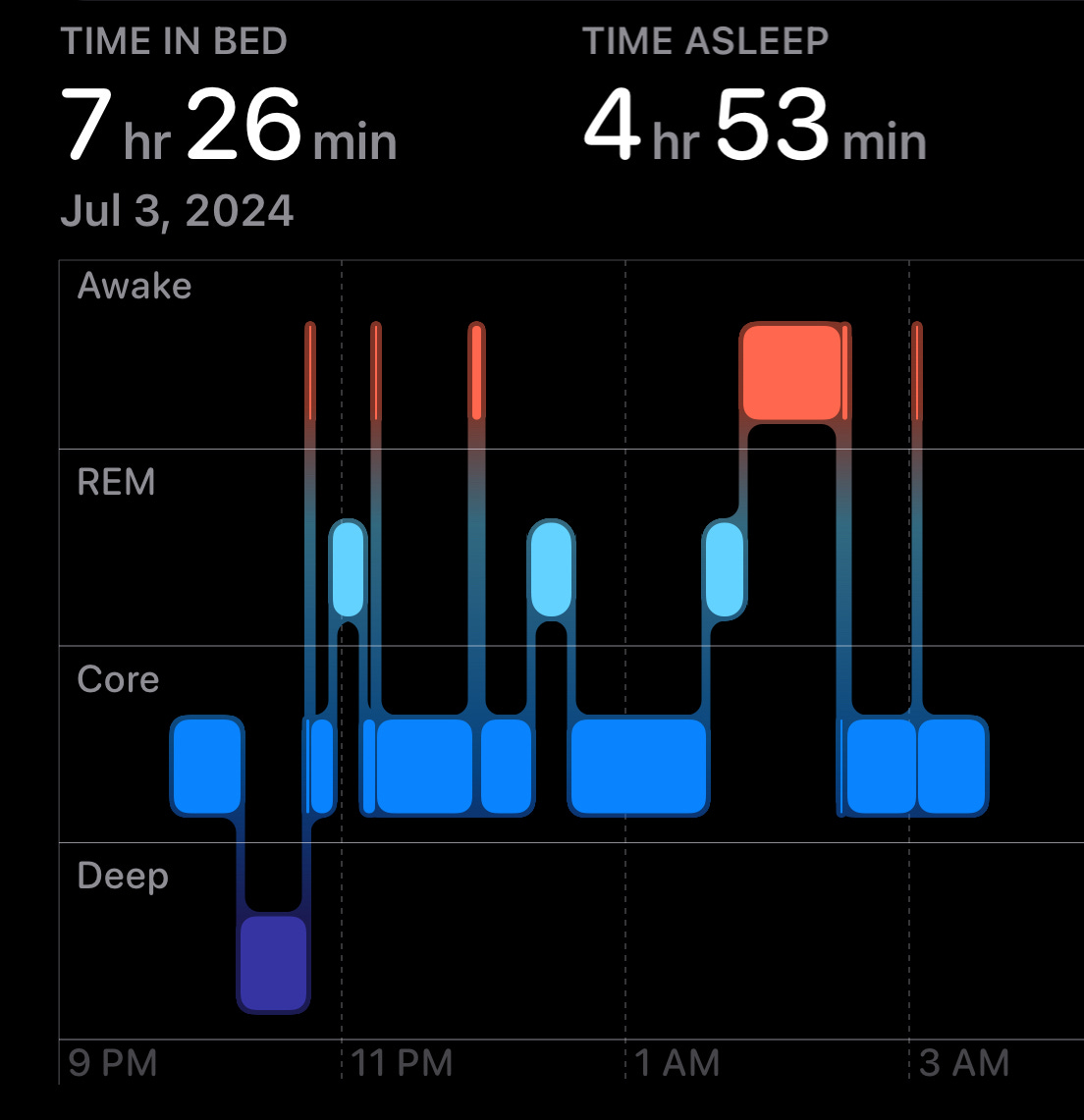To hear the 5-minute audio file that I uploaded today as my Morning Journal flash briefing for Alexa devices, click on the play button:
Five Sleep Tips
I want to tell you about a session I had yesterday with my sleep psychologist, Dr. James Claiborne from California.
I first worked with Dr. Claiborn two years ago when I began my campaign to sleep better. He was on a list of psychologists given to me by James Sullivan, a sleep MD at Mass General. Dr. Sullivan oversaw my initial sleep study and prescribed medication. Dr. Claiborne covered the more behavioral aspects of sleep.
Lately I’ve been backsliding on my sleep habits.
Instead of about six hours of sleep each night, I was trending downward toward five hours or less. So I reached out to Dr. Claiborne and set up yesterday’s telemedicine session. He had five things to coach me on, which I'm going to pass along. Maybe they will be of help to you if you also are having trouble sleeping.
Sleep efficiency is the amount of time asleep divided by the amount of time in bed. Dr. Claiborn says I should shoot for 85 percent. My recent sleep diary showed that I had met the 85-percent target for only two nights out of seven. Dr. Claiborn’s approach is to help me train my brain to accept that that bed equals sleep.
From earlier sessions, I knew it was a bad idea to stay awake in bed for more than 20 minutes. So I would lie awake, waiting for the 20 minutes to pass. Then I’d quietly get up to meditate or read in my chair. Dr. Claiborn yesterday said there’s no need to wait 20 minutes. If I wake up and can tell sleep is not in the offing, I should get up right away and do something, or nothing, until I feel sleepy. He defines sleepy as having difficulty staying awake.
Set my alarm each day for 5 a.m. When I told Dr. Claiborn I generally wake up between 4 and 5 a.m. he said that was “a little noisy.” He recommended a tighter wakeup window, to train the body more precisely.
I’ve been using bluetooth sleepbuds by Bonamour ever since Bose discontinued their very similar product. Bonamour touts its Bellabeats “brainwave entrainment technology” for a sleep-inducing advantage. Drs. Sullivan and Claiborn are both skeptical about claims for such technology. I have been using the sleepbuds, which are comfortable to wear while sleeping on a pillow, while listening to the Bellabeats audio tracks. They’re pleasant enough, but I’d rather listen to something like Apple Music’s classical music for sleeping playlist. That’s what I did last night at about 3 a.m., which is when I usually shift from no buds to sleeping the rest of the night with sleepbuds and an eyeshade.
Screens an hour before bedtime stimulate the mind with blue light. I knew that, but I wondered about watching television. Dr. Claiborn says that if you sit a normal distance away from the TV screen, the blue light shouldn’t be a problem.
The Apple Health app shows I only got 4 hours and 53 minutes of sleep last night. My brain is like a puppy I’m trying to train. It will take a while to return to a solid six hours each night.
At 73, I look at a good night’s sleep as a taste of heaven. I wake up refreshed, hopeful, and rarin’ to play pickleball with my grandsons.
I can get through a day okay on five hours of sleep. Dr. Claiborn subscribes to the theory that “naps steal from a night’s sleep.” So I will try to remember to move more slowly today and to speak less often than usual.



